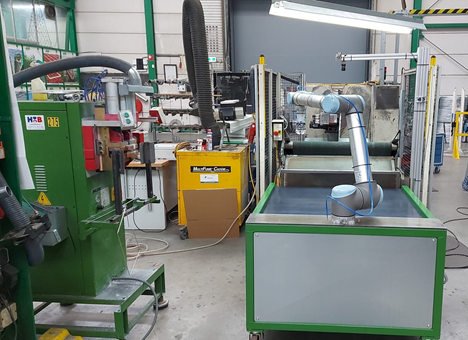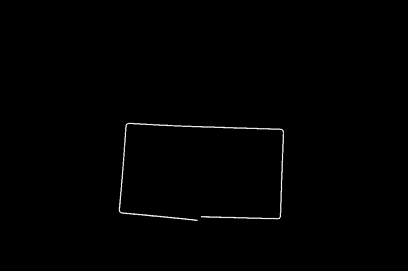Students: Coen van Marrewijk, Tim Kuppens, Bram van der Kooij, René van Rijswijk.
Bram van der Kooij: www.linkedin.com/in/bramvdkooij
Tim Kuppens: https://www.linkedin.com/in/tim-kuppens-420798178/
Coen van Marrewijk: https://www.linkedin.com/in/coen-van-marrewijk-494886183/
René van Rijswijk: https://www.linkedin.com/in/ren%C3%A9-van-rijswijk-b79a0b170/
Introduction
Metazet Formflex is a company specialized in horticulture products and systems, they export these products all over the world. Metazet can provide companies with the whole interior of a greenhouse. For example, think of gutter systems for the crops, or tube rail systems for the carts that ride through the greenhouses, the possibilities are endless.
Current situation
To manufacture different wire products the company owns seven CNC wire bending machines. When these parts are produced the will fall on a small conveyer belt and end up on a table, where a worker will place the parts in a box or he performs some extra processing steps.
Some brackets got to be welded, this happens in a butt-welding machine. The worker picks the parts of the table and welds them at the welding machine. This machine uses high current to fuse two pieces of metal together, this process creates a lot of welding fumes containing zinc. This is not heathy for the workers that use the welder.
The problem
The wire product that comes out of the CNC wire bender got to be picked up, placed in the welding machine and then be buffered on a rack. Some challenges are that none of the product are the same and the margins in the welding machine are small. the system must also be able to handle multiple sizes of brackets.
Our solution
The first option we had, was to pick the parts directly out of the bending machine, this idea would totally work, we would have the cobot next to the bender and the welding machine next to the cobot. We didn’t need vision. But then we started thinking further than our school assignment, we all wanted to deliver something that would be to more value to the company. so we have adjusted the assignment in consultation with the client, so that our robot setup would be flexible and could be placed at all the bending machines. Another added value is that this setup is more suitable for more types of wire products that could be added in the future.
We were going to make a cart with a vision-table where the robot would be mounted on. This way the robot and vision would always we calibrated with each other. Now the robot cell could be placed at all the bending machines.

With this robot-cart only the welding machine must be calibrated, because the cart would not be at the exact same orientation all the time. This calibration works with the freedrive function, so every time the cart is moved, the worker got to move the robot to the welding position, so the robot knows where to weld the brackets. This is proven to be a very reliable and easy way to calibrate. A normal worker can do this.
The vision system for this project was created in this OpenCV-Python, at first, the four midpoints of the rectangle were detected, and the welding point was determined. Then the rotation of the bracket was detected. This way the cobot was exactly sure where to pick it up.

Conclusion
As mentioned before, If the setup is being optimized and expanded, we believe that it can be for great value to the company. Unfortunately, we have not been able to add more variety in the products within the time of this assignment. But we are confident that this setup could work on different wire products too.
Epilogue
At last, we want to thank Ronald Boeters and Jeroen Stijger, for the great work they have done for us. And also we want to thank the rest of the Metazet Formflex company. Everyone was very helpful and cooperative.